Number 17 (Venus) follows number 16, which refers to
Jupiter - and also to the number of days before a star returns to
visibility after its heliacal night.

|
SEPT 22 (EQUINOX) |
48 |
NOV 10 (314 = 378 - 64) |
15 |
NOV 26 (11 * 30) |
5 |
DEC 2 (4 * 84) |
|
 |
 |
 |
 |
|
Ga7-16 (185) |
Gb1-5 (234) |
Gb1-21 (250) |
Gb2-1 (256) |
|
Nov 25 (329) |
Jan 13 (378 → Saturn) |
Jan 29 (*314) |
Febr 4 (400) |
|
"Oct 15 (288) |
"Dec 3 (337) |
"Dec 19 (353) |
"Dec 25 (359) |
|
ANTARES |
48 +
16 + 6 = 70 |
DRAMASA |
... Saturn does give the
measures: this is the essential point. How are we to
reconcile it with Saturn the First King, the ruler
of the Golden Age who is now asleep at the outer
confines of the world? The conflict is only
apparent, as will be seen. For now it is essential
to recognize that, whether one has to do with the
Mesopotamian Saturn, Enki / Ea, or with Ptah of
Egypt, he is the 'Lord of Measures' - spell it
'me' in Sumerian, 'parshu' in Akkadian, 'maat'
in Egyptian. And the same goes for His Majesty, the
Yellow Emperor of China - yellow, because the
element earth belongs to Saturn - 'Huang-ti
established everywhere the order for the sun, the
moon and the stars'. The melody remains the same. It
might help to understand the general idea, but
particularly the lucubrations of Proclus, to have a
look at the figure drawn by Kepler, which represents
the moving triangle fabricated by 'Great
Conjunctions', that is those of Saturn and Jupiter.
One of these points needs roughly 2.400 years to
move through the whole zodiac.

... Fetu-tea [Pale Star = Saturn] was the
king. He took to wife the dome of the sky,
Te-Tapoi-o-te-ra'i, and begat stars that shine (hitihiti)
and obscure, the host of twinkling stars,
fetu-amoamo, and the phosphorescent stars, te
fetu-pura-noa. There followed the star-fishes,
Maa-atai, and two trigger-fishes that eat
mist and dwell in vacant spots in the Milky Way, the
Vai-ora or Living-water of Tane. The
handsome shark Fa'a-rava-i-te-ra'i,
Sky-shade, is there in his pool and close by is
Pirae-tea, White Sea-swallow (Deneb in Cygnus)
in the Living-waters of Tane ...
Hiti. 1. To show itself again, to reappear
(of the new moon, of a constellation - meaning
uncertain). 2. Said of thin, tough-fleshed fish of
indifferent taste: ika hiti. 3. Said of fish
when they come to the stones of the shore for
insects among the seaweed: he hiti te ika. 4.
To reproach someone for his ingratitude. Vanaga. 1.
To rise, to appear, to dawn; hitihaga,
rising; hitihaga roa, sunrise; hitihiti,
to dawn; horau hitihiti, break of day;
hakahiti ki te eeve, to show the buttocks. 2.
Puffed; gutu hiti, thick lips. Churchill.
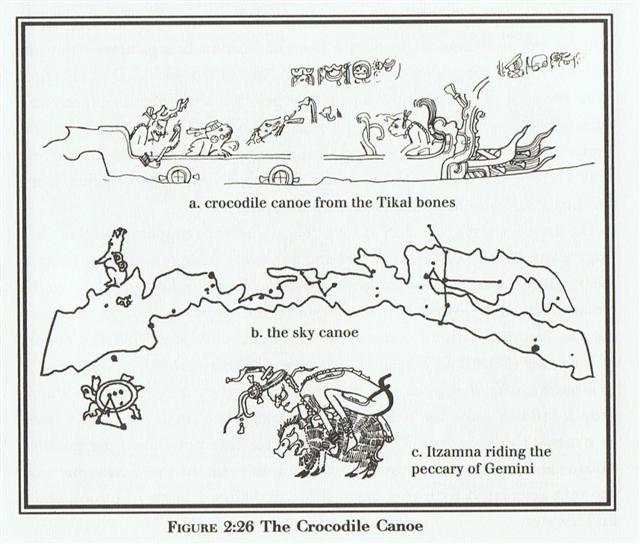
The 11th Chinese station Emptiness came 11 days after the
Girl:
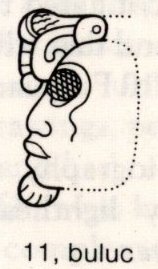

.jpg)

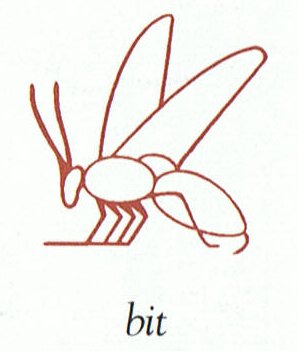
... Then they went on and came to Hanga
Takaure. There they gave the name Hanga Takaure A Hau
Maka. They made camp and rested at the Bay of Flies for a
week (etahi pohitu).
On the eighteenth day of the month of
July (Anakena) they went on from Hanga Takaure.
They climbed uphill, went on, and reached Poike ...
[E:23]
|
FEBR 26 (121
- 64) |
22 |
MARCH 21
(80) |
3 |
MARCH 25 (84) |
180 |
SEPT 22
(EQUINOX) |
 |
no glyph |
 |
 |
|
Gb8-8 (449) |
Ga1-4 |
Ga7-16 (185) |
|
Bharani (*41) |
Hyadum II (*64) |
Aldebaran (*68) |
Antares (*249) |
|
May 1 (121) |
May 24 (144) |
May 28 (148) |
Nov 25 (329) |
|
"March 21
Day zero (80) |
"April 13
(103) |
"April 17
(107) |
"Oct 15
(288) |
|
23 (*64 - *41) + 185
= 208 (= 16 * 13) |
Here was the beginning.
... Long ago in the very beginning of time there dwelt within a
shell an infant god whose name was Ta'aroa. He was
Ta'aroa the unique one, the ancestor of all gods, the
creator of the universe whose natures were myriad, whose
backbone was the ridgepole of the world, whose ribs were its
supporters. The shell was called Rumia, Upset. Becoming
aware at last of his own existence and oppressed by a yearning
loneliness Ta'aroa broke open his shell and, looking out,
beheld the black limitless expanse of empty space. Hopefully, he
shouted, but no voice answered him. He was alone in the vast
cosmos. Within the broken Rumia he grew a new shell to
shut out the primeval void [emptiness] ...
This was an important place, because it was the Foundation:
|
CLOSE TO THE SUN: |
|
DEC 7 |
8 |
9 |
10 |
11 (345) |
12
(*266) |
 |
 |
 |
 |
 |
 |
|
Gb2-6
(32) |
Gb2-7 |
Gb2-8 |
Gb2-9 |
Gb2-10
(82 + 183) |
Gb2-11 (266) |
|
BUNDA (Foundation) / KAKKAB
NAMMAΧ (Star of Mighty Destiny) |
θ Piscis
Austrini (330.1), λ Oct. (330.7) |
|
Al Sa'd al Su'ud-22 (Luckiest of the Lucky) /
Emptiness-11 (Rat)
TSIN = 36 Capricorni
(325.2),
ALPHIRK (The Flock) = β Cephei
(325.7),
SADALSUD
=
β
Aquarii,
ξ
Gruis (325.9) |
no star
listed (326) |
CASTRA = ε Capricorni
(327.2),
BUNDA = ξ Aquarii
(327.5)
SIRIUS (α Canis Majoris)
|
Mahar sha hi-na Shahū-26 (Western One in the Tail of
the Goat)
NASHIRA =
γ
Capricorni
(328.0),
ν
Oct. (328.3), AZELFAFAGE
= π¹ Cygni,
κ
Capricorni (328.7 |
Arkat sha hi-na Shahū-27 (Eastern One in the Tail of
the Goat)
ENIF
(The Nose) = ε Pegasi, ERAKIS = μ Cephei
(329.2),
46 CAPRICORNI,
JIH
(the Sun) =
κ
Pegasi
(329.3),
ι
Piscis Austrini (329.4),
λ
Capricorni (329.6),
ν
Cephei (329.7),
DENEB ALGIEDI
=
δ
Capricorni
(329.8)
*288.0 = *329.4 - *41.4 |

... In
China, with Capricornus, Pisces, and a part of
Sagittarius, it [Aquarius] constituted the early
Serpent, or Turtle, Tien Yuen; and later was
known as Hiuen Ying, the Dark Warrior and
Hero, or Darkly Flourishing One, the Hiuen Wu,
or Hiuen Heaou, of the Han dynasty, which
Dupuis gave as Hiven Mao. It was a symbol of
the emperor Tchoun Hin, in whose reign was a
great deluge; but after the Jesuits came in it
became Paou Ping, the Precious Vase. It
contained three of the sieu, and headed the list of
zodiac signs as the Rat, which in the far
East was the ideograph for 'water', and still so
remains in the almanacs of Central Asia, Cochin
China, and Japan ... |
|
Febr 9
(40) |
10 |
11 |
12 (408) |
13
(*329) |
All
Hearts' Day |
|
°Febr 5
(36) |
6 |
7 |
8 (*324) |
9 (40) |
10 |
|
'Jan 13
(378) |
14 |
15
(*300) |
16 |
17 |
18 (383) |
|
"Dec 30
(364)
|
Ko Koró
(→ kórē)
31 |
"Jan 1 |
2 |
3 |
4 |
|
... On February 9 the Chorti Ah K'in,
'diviners', begin the agricultural year. Both the
260-day cycle and the solar year are used in setting
dates for religious and agricultural ceremonies,
especially when those rituals fall at the same time
in both calendars. The ceremony begins when the
diviners go to a sacred spring where they choose
five stones with the proper shape and color. These
stones will mark the five positions of the sacred
cosmogram created by the ritual. When the stones are
brought back to the ceremonial house, two diviners
start the ritual by placing the stones on a table in
a careful pattern that reproduces the schematic of
the universe. At the same time, helpers under the
table replace last year's diagram with the new one.
They believe that by placing the cosmic diagram
under the base of God at the center of the world
they demonstrate that God dominates the universe.
The priests place the stones in a very particular
order. First the stone that corresponds to the sun
in the eastern, sunrise position of summer solstice
is set down; then the stone corresponding to the
western, sunset position of the same solstice. This
is followed by stones representing the western,
sunset position of the winter solstice, then its
eastern, sunrise position. Together these four
stones form a square. They sit at the four corners
of the square just as we saw in the Creation story
from the Classic period and in the Popol Vuh.
Finally, the center stone is placed to form the
ancient five-point sign modern researchers called
the quincunx ...


... In the
inscriptions of Dendera, published by Dümichen, the
goddess Hathor is called 'lady of every joy'.
For once, Dümichen adds: Literally ... 'the lady of
every heart circuit'. This is not to say that the
Egyptians had discovered the circulation of the
blood. But the determinative sign for 'heart' often
figures as the plumb bob at the end of a plumb line
coming from a well-known astronomical or surveying
device, the merkhet. Evidently, 'heart' is
something very specific, as it were the 'center of
gravity' ...
See Aeg.Wb. 2, pp. 55f.
for sign of the heart (ib) as expressing
generally 'the middle, the center'.
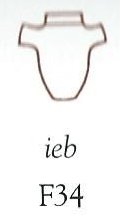
And this may lead
in quite another direction. The Arabs preserved a
name for Canopus - besides calling the star Kalb
at-tai-man ('heart of the south') ... Suhail
el-wezn, 'Canopus Ponderosus', the
heavy-weighing Canopus, a name promptly declared
meaningless by the experts, but which could well
have belonged to an archaic system in which Canopus
was the weight at the end
of the plumb line, as befitted its important
position as a heavy star at the South Pole of the
'waters below'. Here is a chain of inferences which
might or might not be valid, but it is allowable to
test it, and no inference at all would come from the
'lady of every joy'. The line seems to state that
Hathor (= Hat Hor, 'House of
Horus') 'rules' the revolution of a specific
celestial body - whether or not Canopus is alluded
to - or, if we can trust the translation 'every',
the revolution of all celestial bodies. As concerns
the identity of the ruling lady, the greater
possibility speaks for Sirius, but Venus cannot be
excluded; in Mexico, too, Venus is called 'heart of
the earth'. The reader is invited to imagine for
himself what many thousands of such pseudo-primitive
or poetic interpretations must lead to: a disfigured
interpretation of Egyptian intellectual life ... |
|
CLOSE TO THE FULL
MOON: |
|
JUNE
7 |
8
(*79) |
9 |
10 (161) |
11 |
12 |
|
The Knot (Ukdah) |
Rishu A.-13 (Head of the Lion)
ψ Leonis (146.4),
RAS ELASET AUSTRALIS
= ε Leonis
(146.6)
*105.0 = *146.4 - *41.4 |
VATHORZ
PRIOR = υ Carinae
(147.9) |
|
Star-25 (Horse) /
ANA-HEU-HEU-PO-5 (Pillar where debates were held)
ALPHARD
(The Horse) =
α
Hydrae
(142.3),
ω
Leonis (142.6),
τ¹
Hydrae (142.7) |
Al Tarf-7 (The End)
ψ
Velorum (143.3),
ALTERF
=
λ
Leonis,
τ²
Hydrae (143.4),
ξ
Leonis (143.5)
*102.0 = *143.4 - *41.4 |
A Hydrae
(144.1)
VEGA (α
Lyrae)
|
UKDAH (Knot) = ι Hydrae
(145.4), κ Hydrae (145.5),
SUBRA = ο Leonis
(145.8)
*104.0 = *145.4 - *41.4 (= *288 - *184) |
 |
|
Aug 10 |
11 |
12 |
13
(*145) |
14 |
15 (227) |
|
°Aug 6 |
7 |
8 (220) |
9 |
10 |
11 (*143) |
|
'July 14 |
15 |
16 |
17 (*118) |
18 |
19 (200) |
|
SIRIUS |
"July 1 |
2 |
3
(*104) |
4 (185) |
Te
Anakena 5 |
|
At the time of rongorongo Sirius
stood like a pillar at day zero in June 30, 181
(*101), and 101 days later came Spica in October 9,
282 (*202). The flag of Brazil has uplifted Spica
with a little dot far down marking Dramasa (σ
Octantis, the South Pole star). In between we can
perceive the Southern Cross, and between Spica and
the Southern Cross is the Tail of the Hydra (γ
Hydrae, Al Dhanab al Shuja) - in the day
before Spica but below the curved band. To the right
is the Scorpion with Antares placed at the opposite
side compared to Procyon (α
Canis Minoris), below O in ORDEM. Alphard (α
Hydrae) is below M. Sirius and 4 more stars in Canis
Major are noted below Alphard, together with
Canopus. In addition to 8 stars in the Scorpion we
can also see 3 more stars to the left which mark the
Southern Triangle (Triangulum Australe).
Altogether there are 26 + 1 = 27 stars:

... They stayed (there longer). On the fifth day of
the month of July (Anakena) [day 186 + 41 =
227], they all got up, went downhill, went on, and
reached Hanga Te Pau. They took their
provisions with them, carrying them on their
shoulders, went on, and reached Te Pou. They
made camp and slept in Te Pou on the tenth of
the month of July (Anakena). Then they all
got up, carried their provision on their shoulders,
went straight ahead, and followed the path of the
dream soul of Hau Maka. They came to Hua
Reva and said, This is Hua Reva A Hau Maka!... |
 |
 |
 |
 |
 |
 |
|
Ga3-19 |
Ga3-20
(79) |
Ga3-21 |
Ga3-22 |
Ga3-23 |
Ga3-24 |
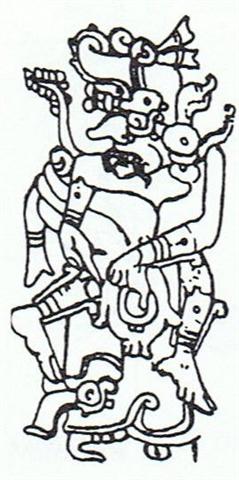 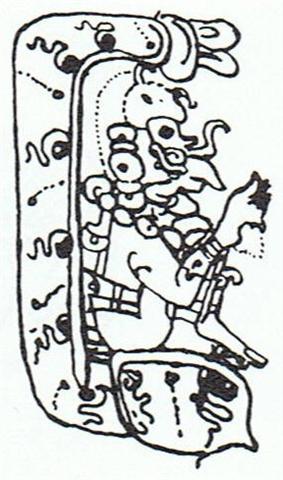
|






.jpg)













